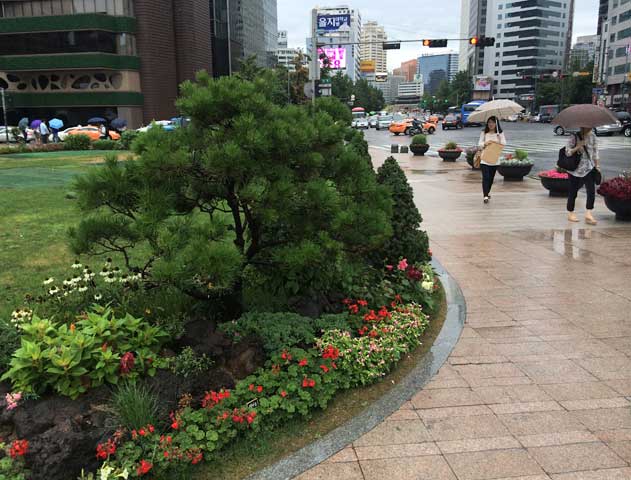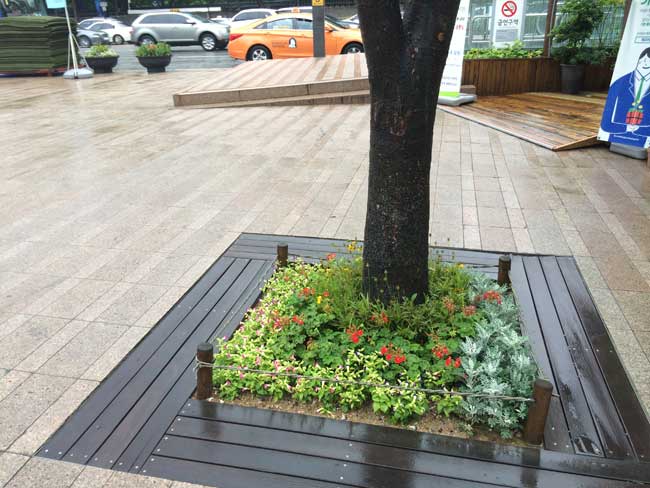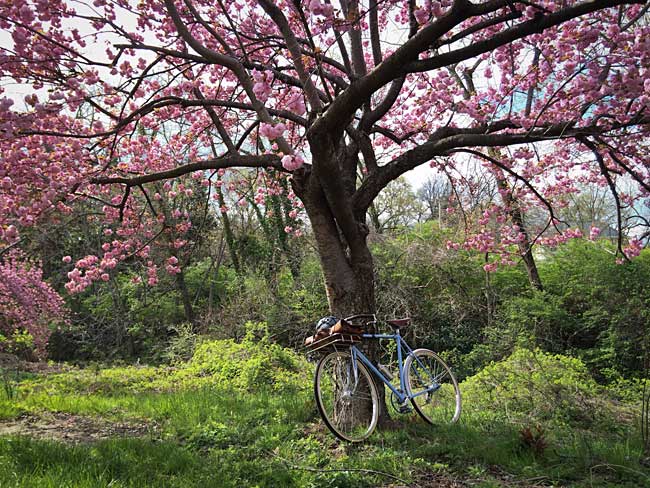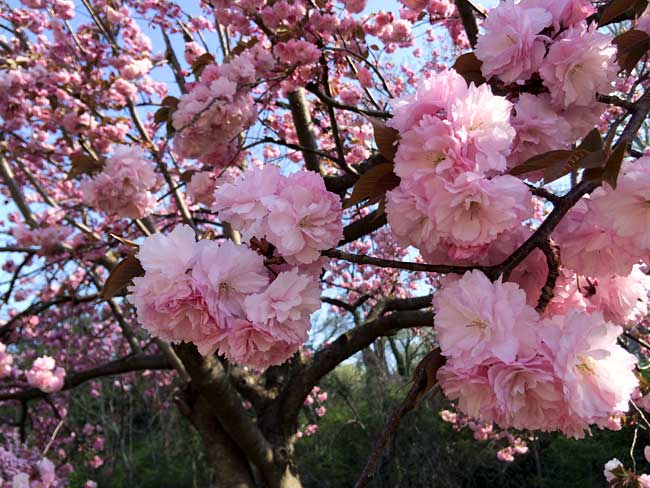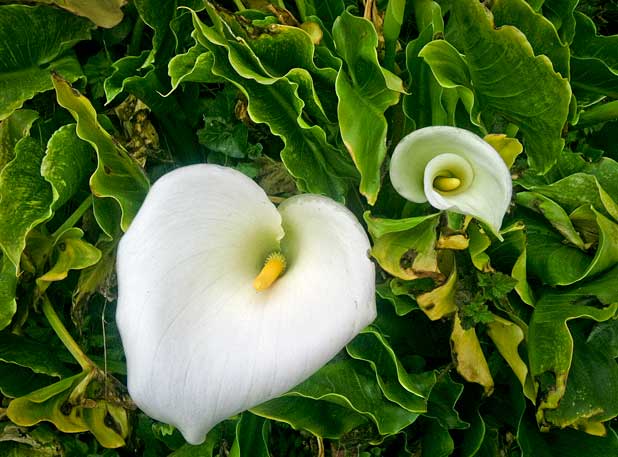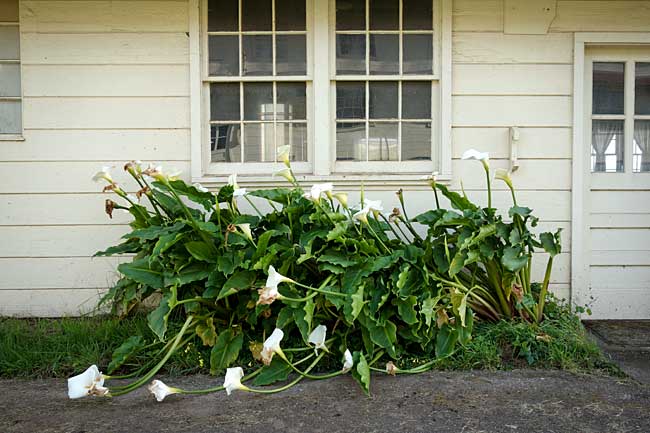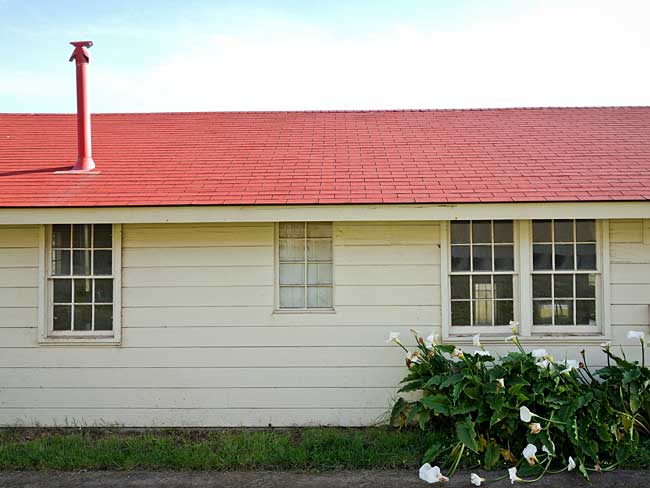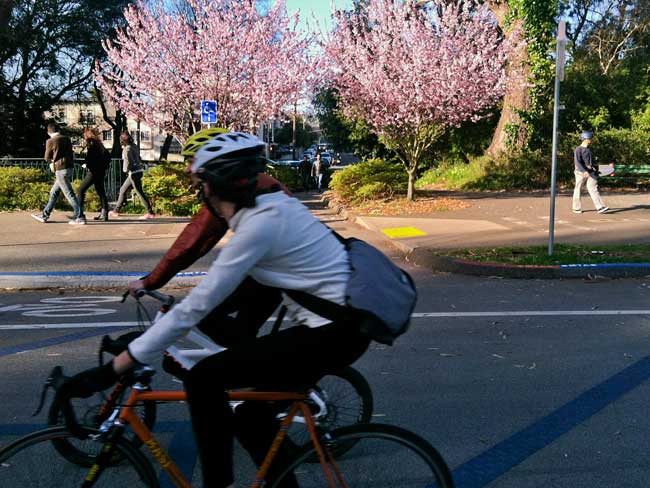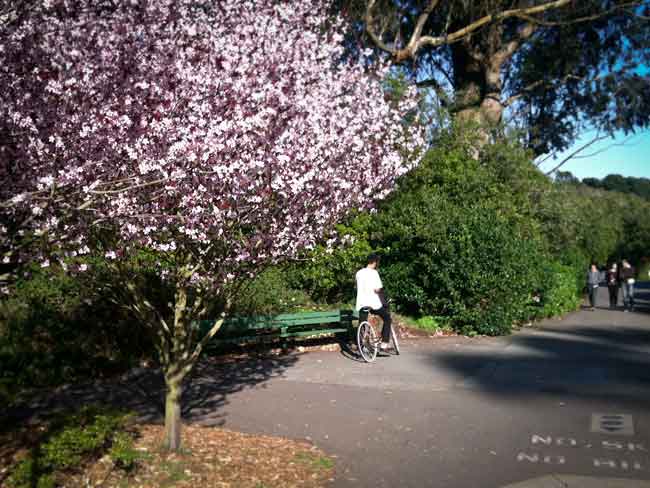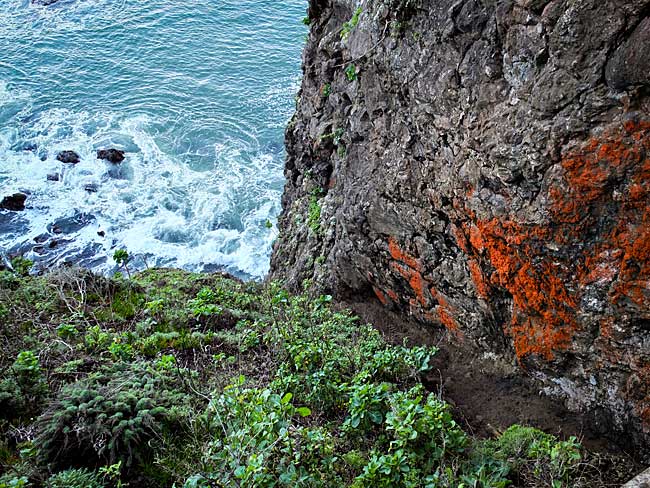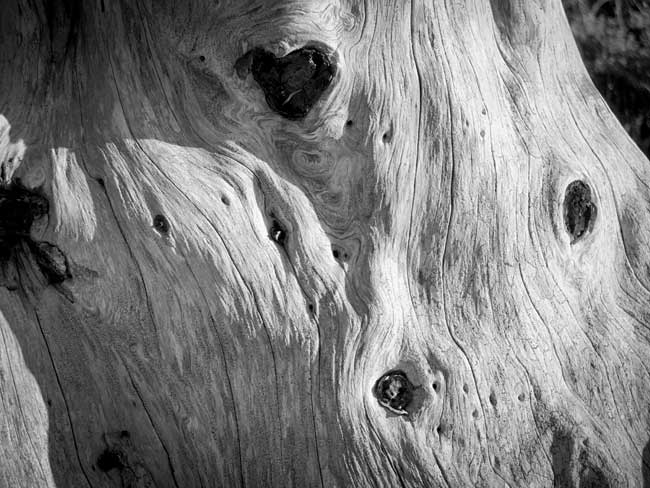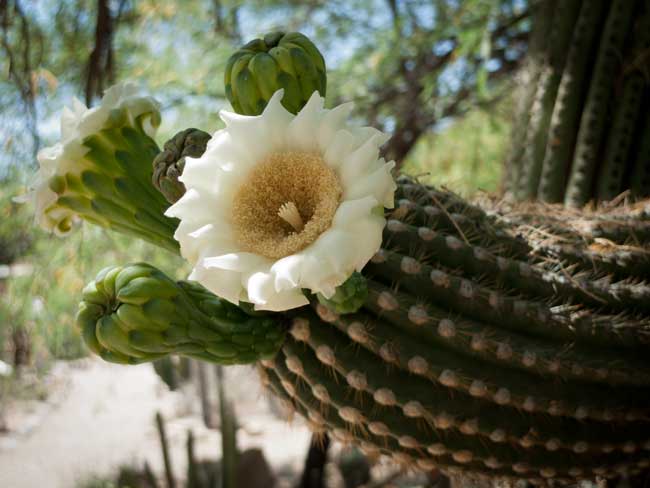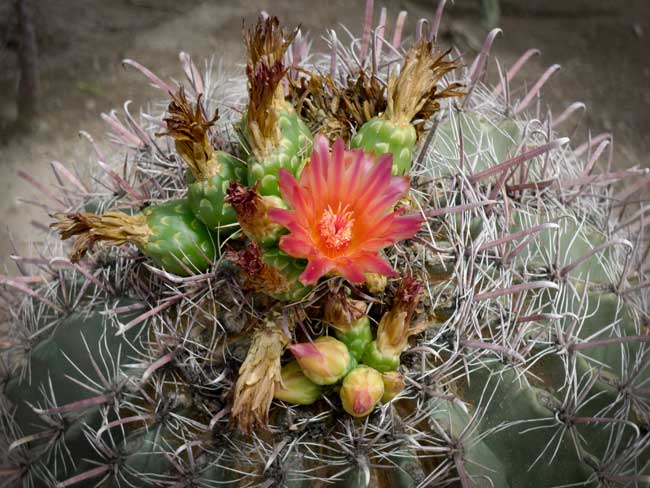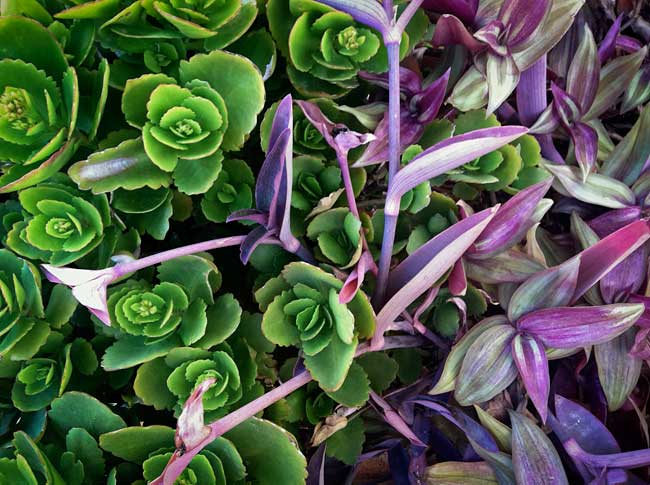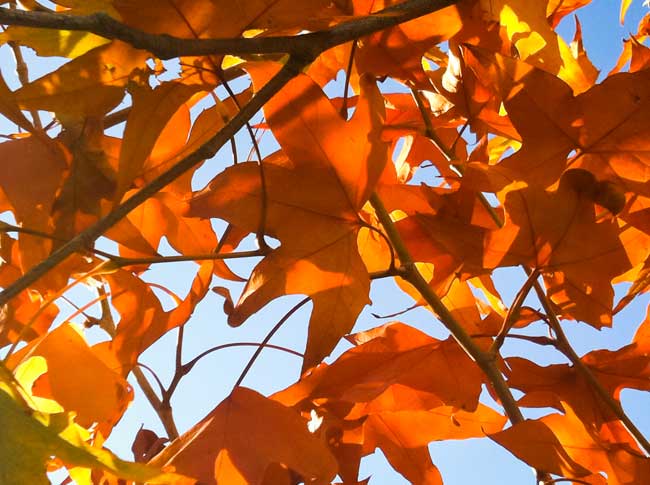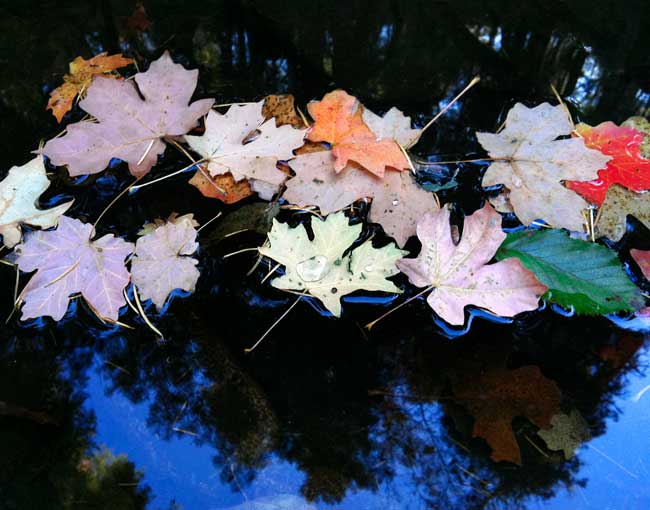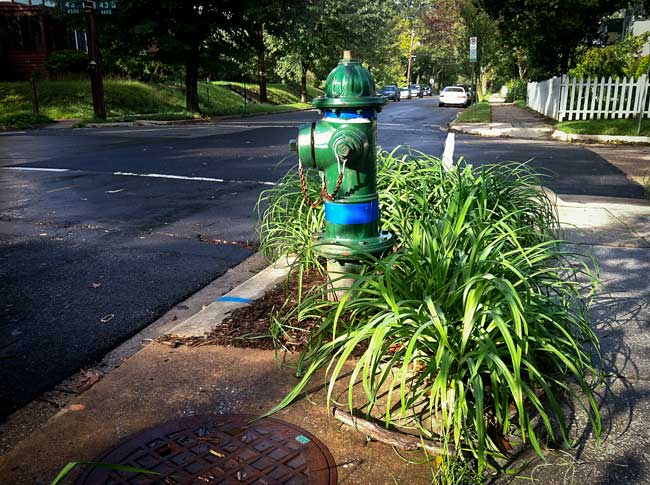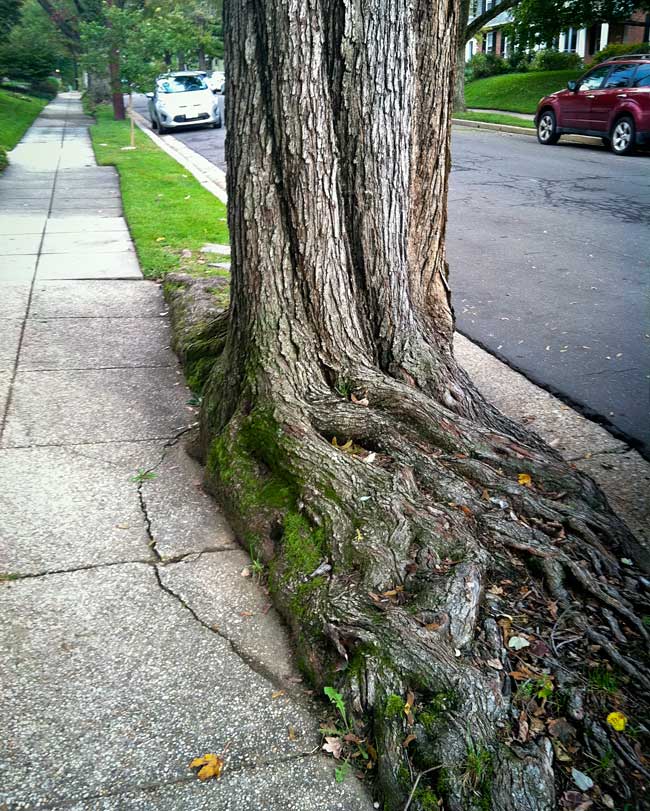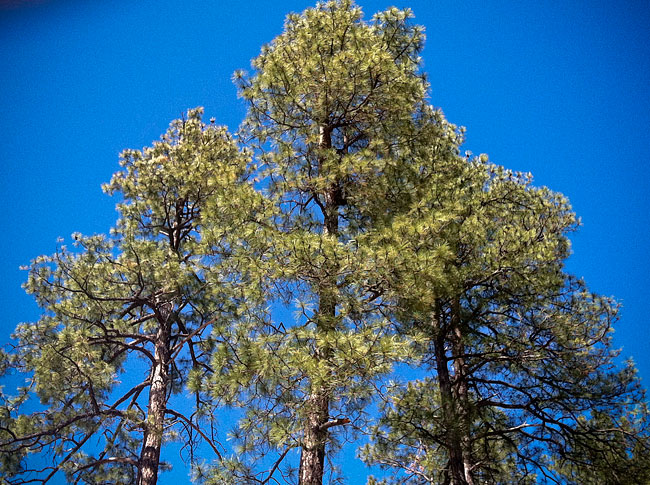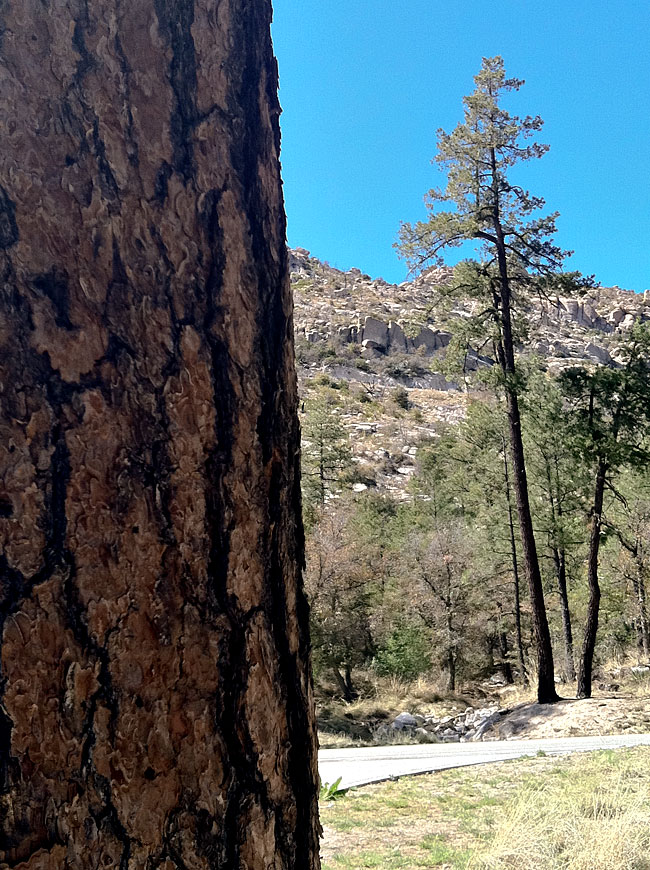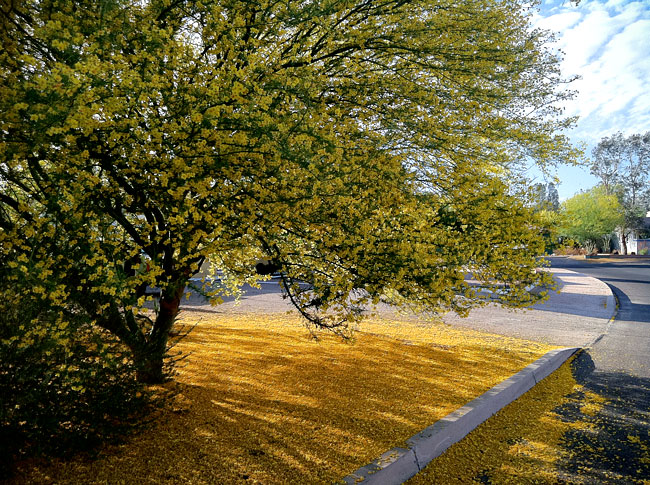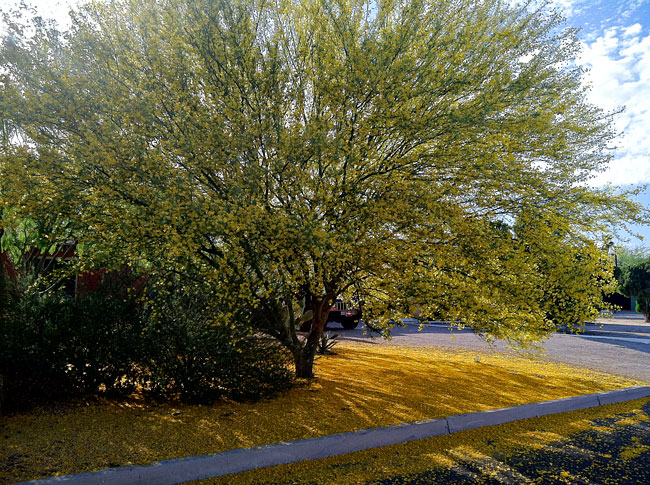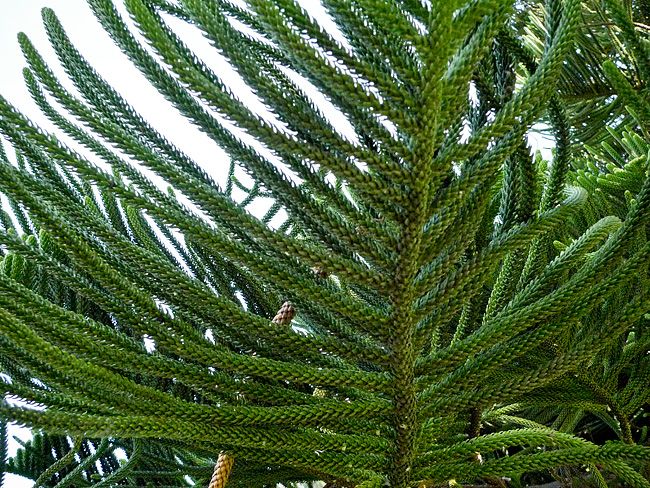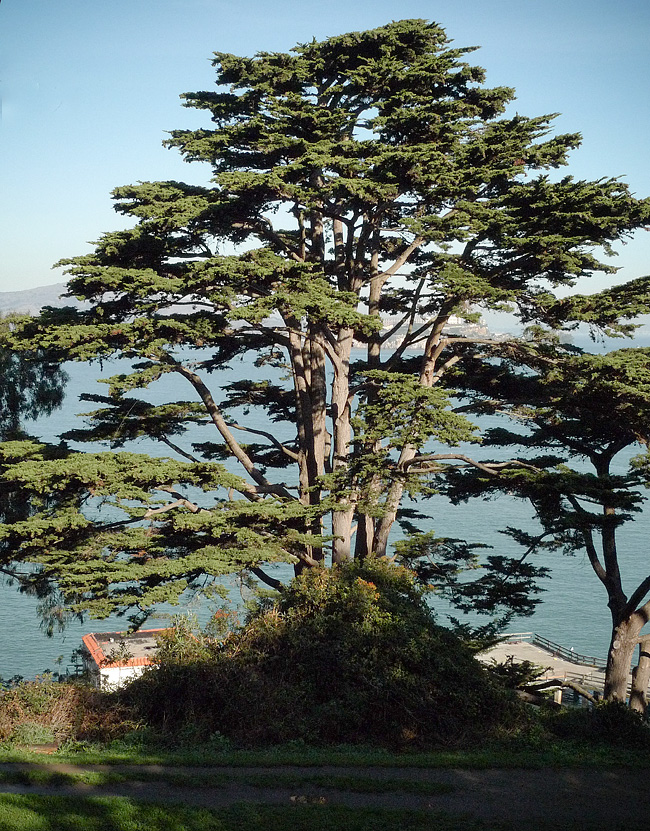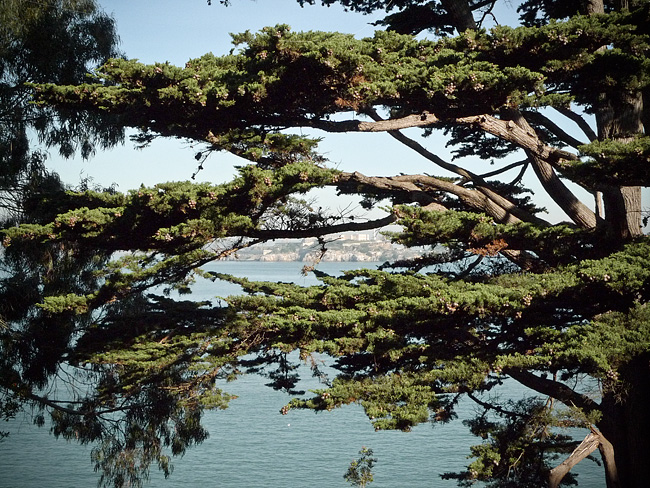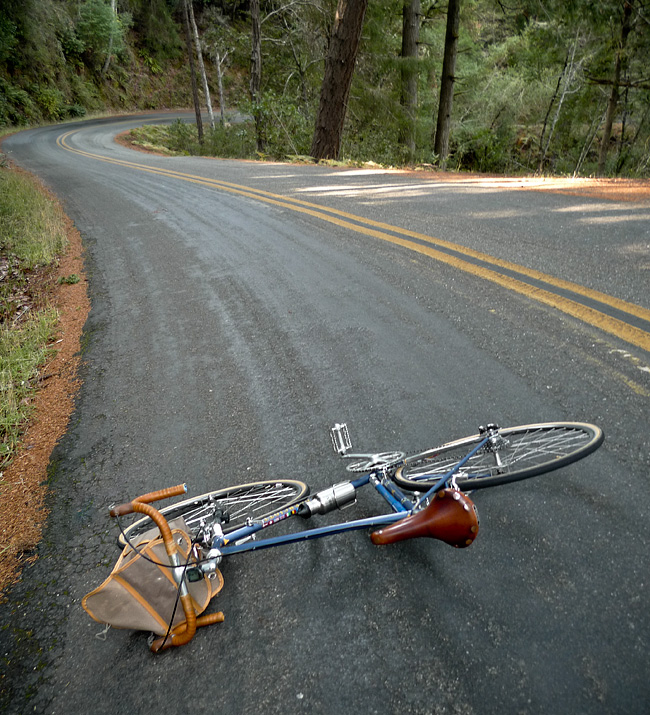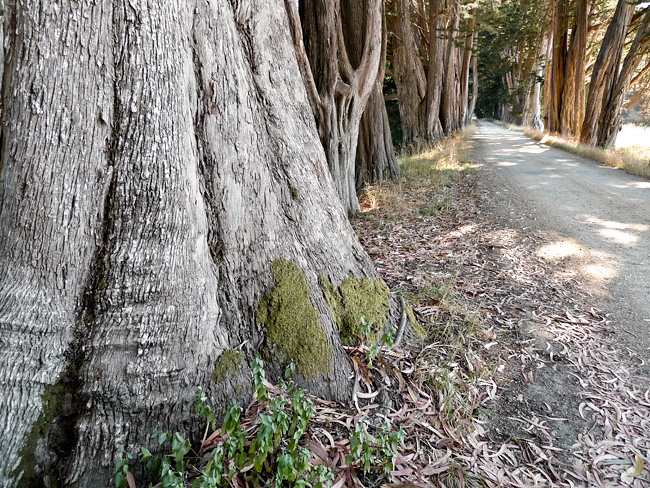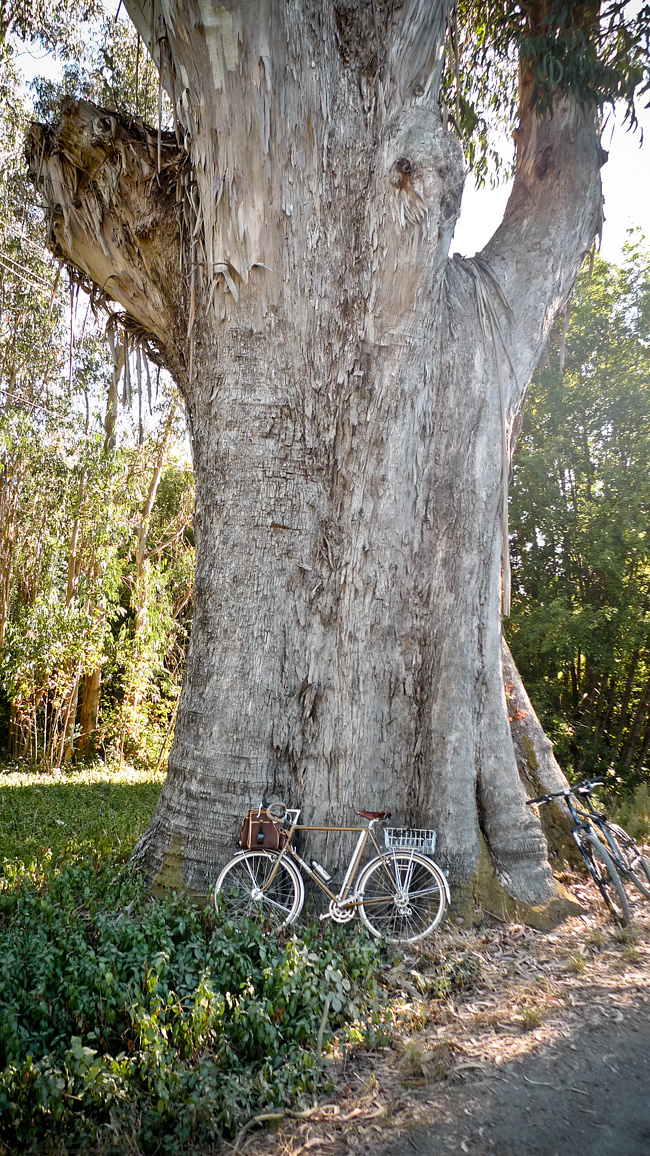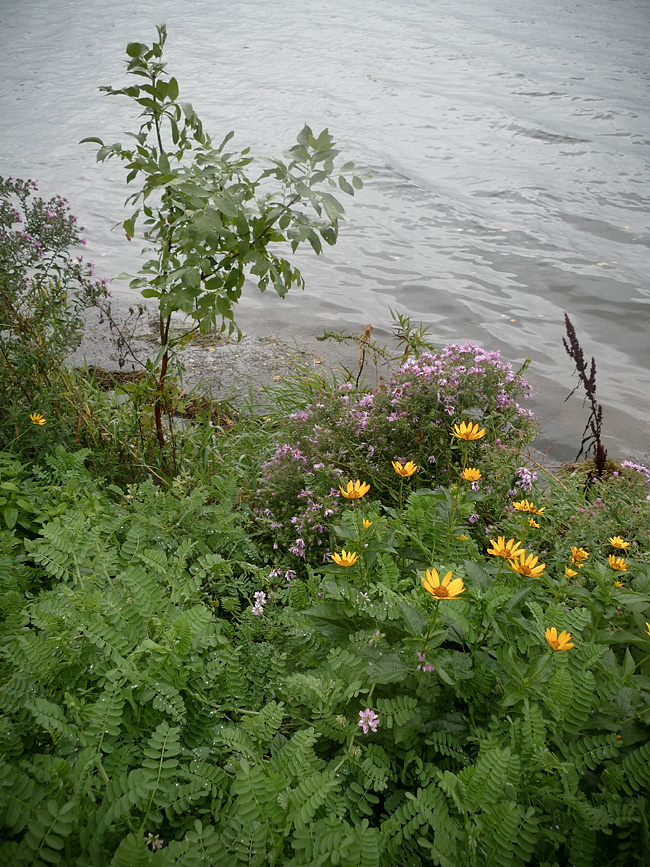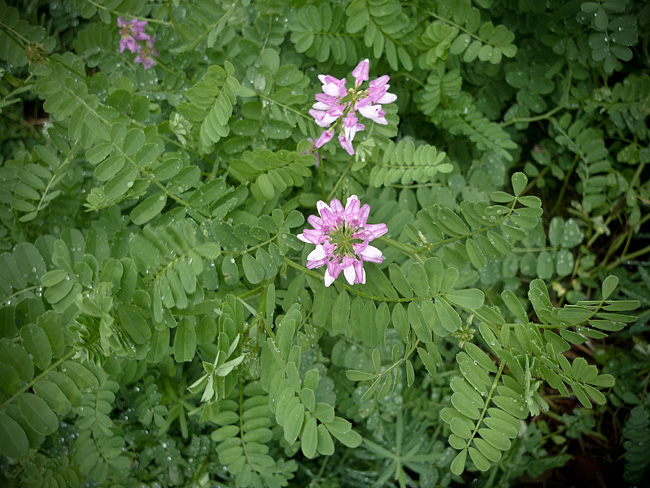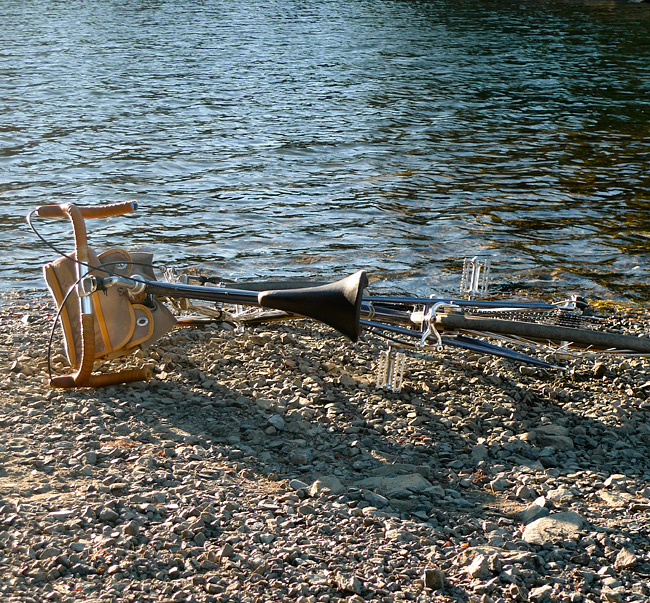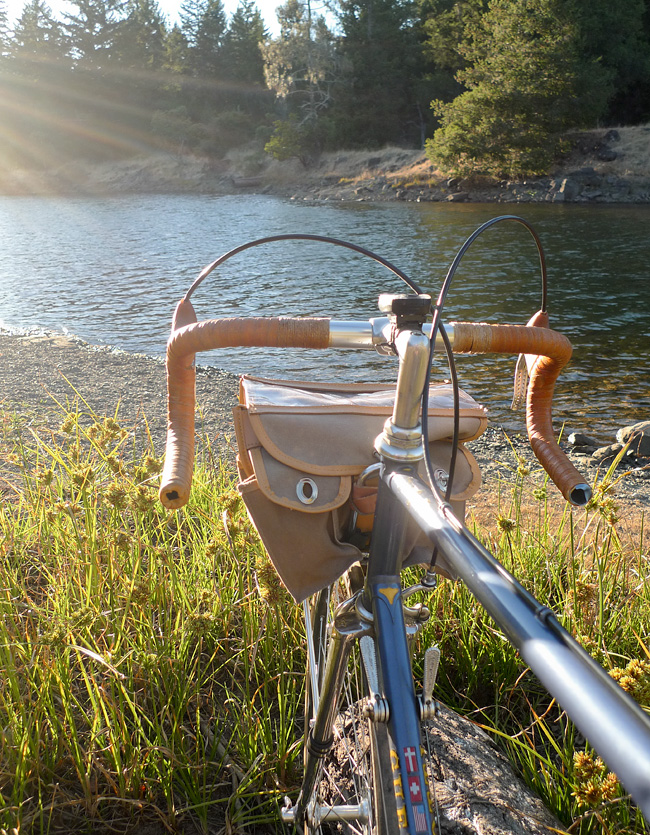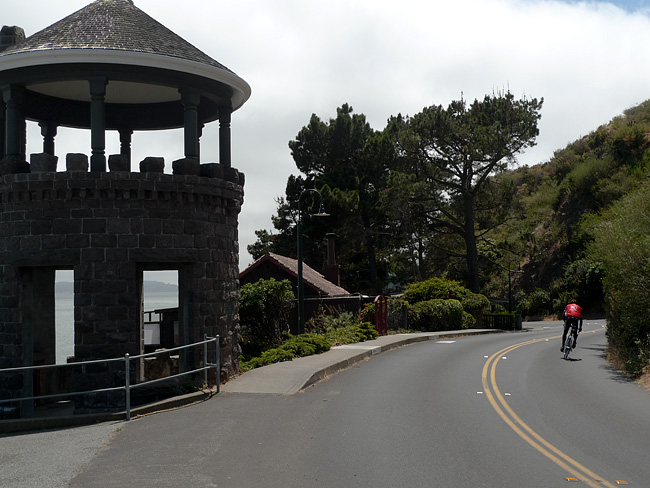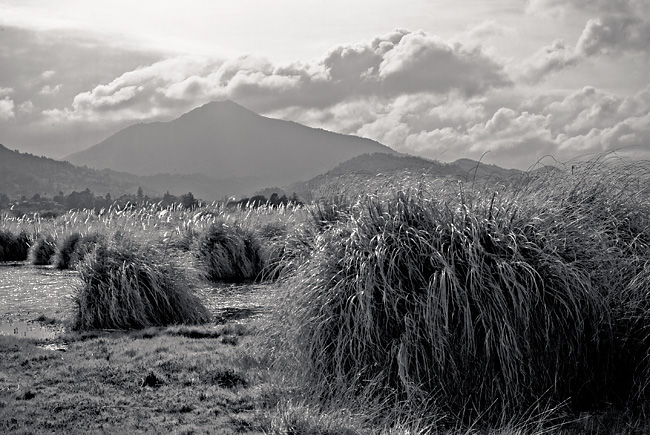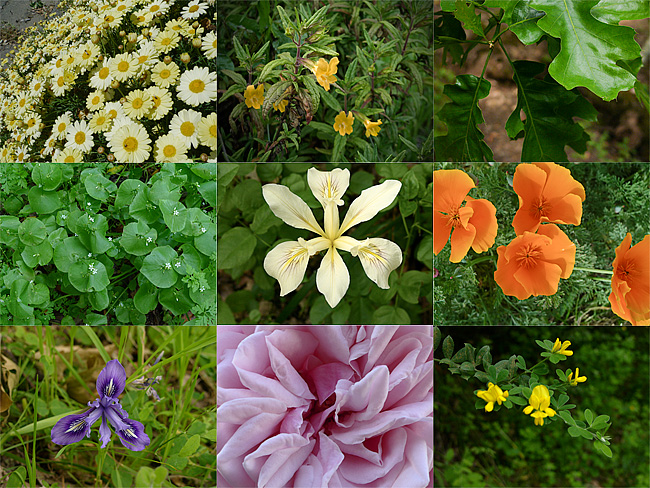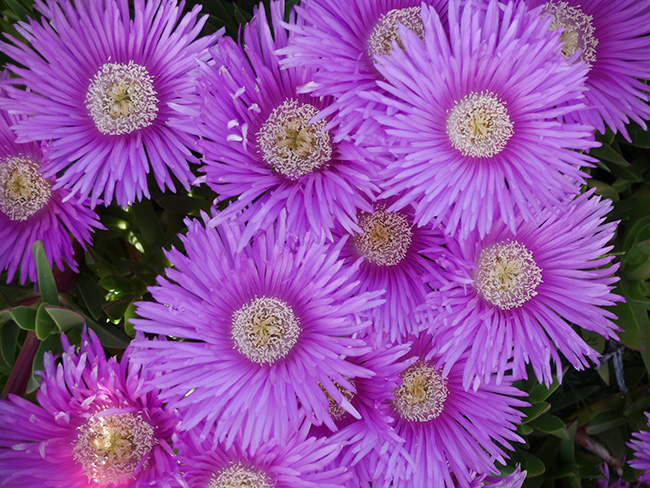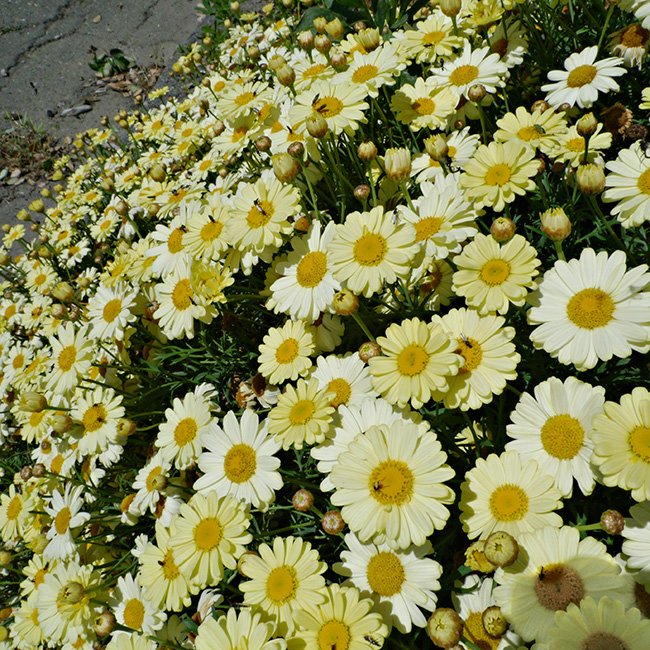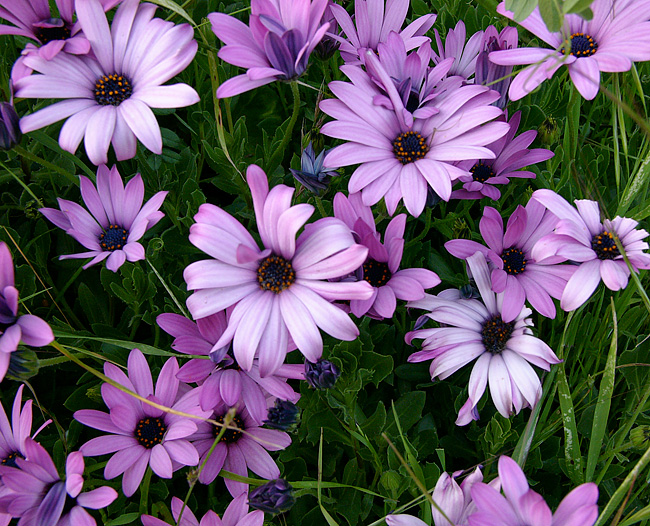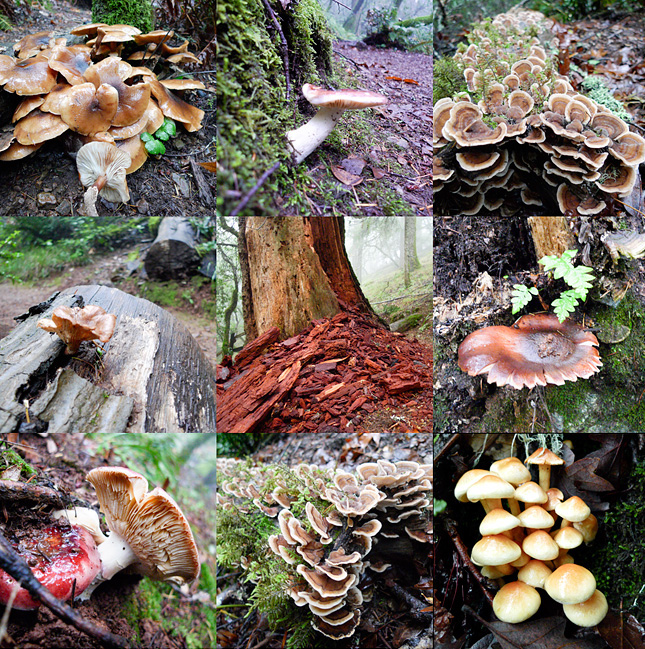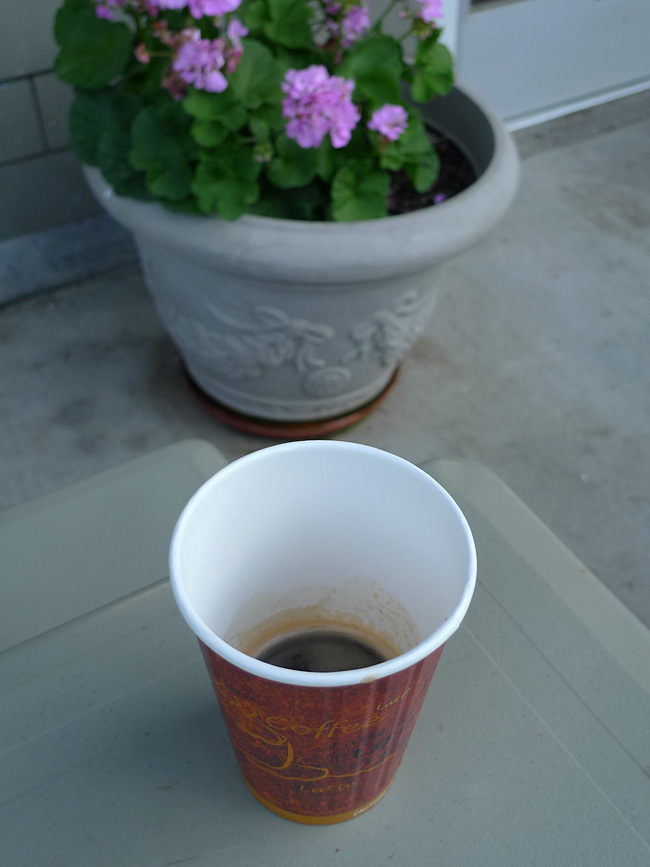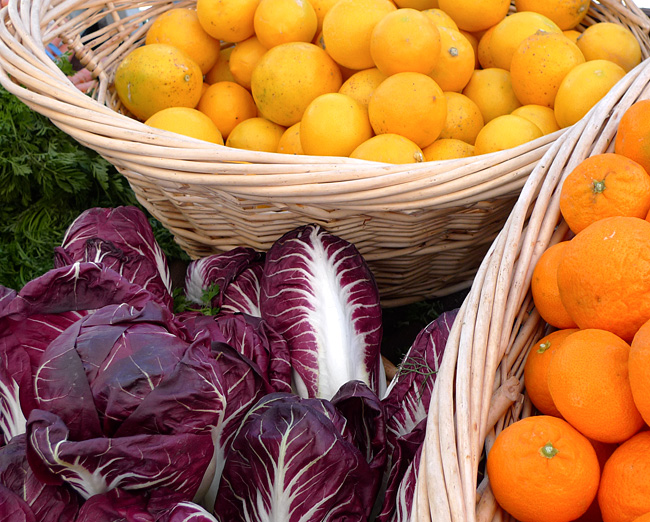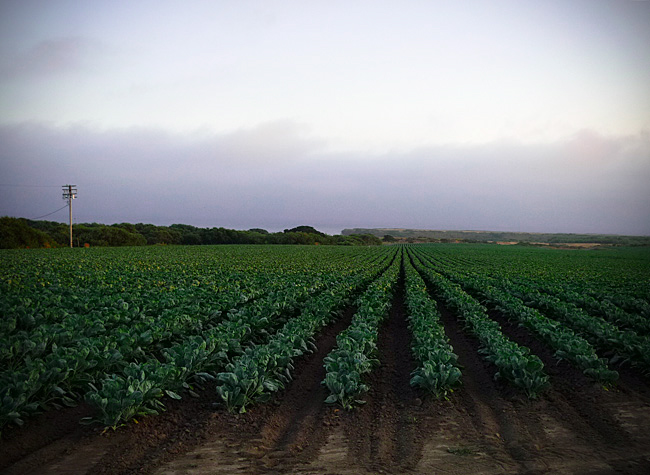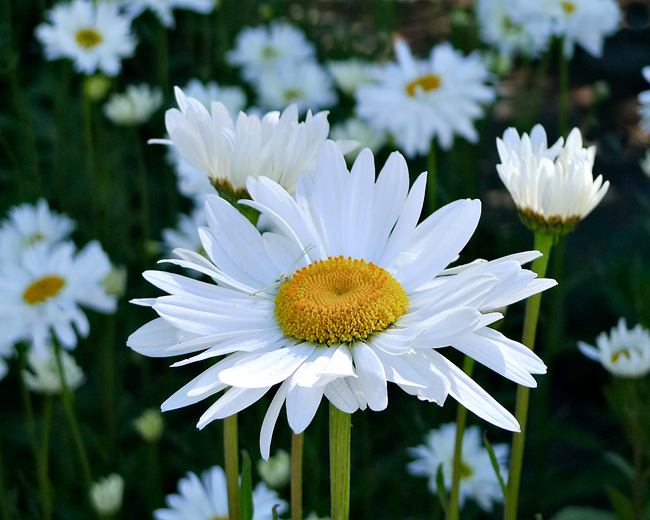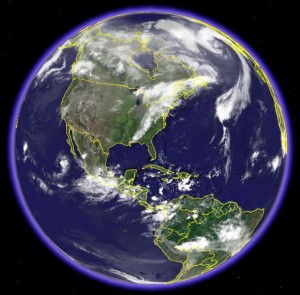Archive for the ‘flora’ tag
On the Road……Seoul Korea’s Green Spaces
Seoul is so full of energy and life — it is a fantastic city!
I stayed less than 24 hours, and it rained most of the time, but I really enjoyed it here. I took an early morning walk around the city center, on a long loop that took me from The Plaza Hotel to Gyeongbokgung Palace and back.
In the city center, I didn’t see many bicyclists or much bicycling infrastructure. The one or two cyclists I saw, like the man below, rode on the large pedestrian sidewalks.

Still, the densely populated area around The Plaza Hotel smartly and elegantly accommodates cars, buses (with their own dedicated lanes) and pedestrians.
Most impressive is how the city center is brimming with greenery and arboriculture. American cities could learn a lot about bringing bits of biodiversity into the city from the urban planners in Seoul.
The photograph at the top of the page and those below are good examples:
On the Road……Cherry Bloosoms are (were) Peaking in VA
Everyone is eager to call the peak, or predict the peak, or declare they saw the Cherry Blossoms at their peak. It doesn’t matter if you are in Washington DC or in Japan — it’s the same.
I’m in no position to do any of these things because I have a hard time recognizing the difference between a cherry blossom and a plum blossom.
(editor’s note: I wrote about Ume and Sakura — the Japanese words for plum and cherry trees — in San Francisco’s Golden Gate park awhile back.)
However, about a week to a week and a half ago the weather was in the high 60s low 70s in northern VA. Now, I’m a bit hesitant to make the call but…I swear the cherry blossoms were at their peak!
I was riding my bike to work all week. Even though I was running late on this particular day, the landscape was so compellingly beautiful I stopped to make these pictures.
Below are some close-ups of the blossoms and the petals. Because of the small notches at the top of the individual petals, I believe these are, indeed, cherry blossoms.
Can any of my botanically-minded friends help me out here?
Finally, here is a map that I think shows the 2014 forecast for Sakura, including when and where they are blossoming across Japan’s different climate zones.
It looks like until May 10th there’s still time to see Sakura in the far north around Hokkaido.

-Nathan
Random Images……Cala lilies on Highway 1
In light of yesterday’s post, here’s some calla lilies (Zantedeschia aethiopica) that I photographed several weeks ago growing along Highway 1 in Marshall, CA.
On the Road……Fort Cronkite calla lilies
I find the calla lily (Zantedeschia aethiopica) a very elegant and photogenic specimen. They’re native to southern Africa, but have made their way around the world to places such as California and Australia. Australia classifies them as pests and toxic weeds. Hey Australia, that’s no way to treat a visitor!
This bunch of lilies is growing against one of the old, military buildings in Fort Baker. (Note the red-roof: it’s a signature architectural feature of the structures inside this park).
On the Road……The Life Aquatic: Marshall, CA
If people ask me my favorite town in Marin County, I answer Marshall.
I do it for the puzzled look I inevitably get since few people have heard of the little community that has a population somewhere between 50 and 400.
My second favorite? Dogtown, with a population of 30.
On the Road……Plum Blossoms (Ume) in Golden Gate Park
The cherry plum blossoms around the Bay Area are in peak bloom — or that’s how it looks to me after watching them for the last 2-3 weeks!
In Japan, the plum blossom has been overtaken in popularity by the similar looking cherry blossom. In case you’re curious, the Japanese word for cherry blossom is Sakura; for plum blossom it is Ume. Both are members of the genus Prunas.
It’s common to celebrate blossom time with festive picnics (and sake drinking) under the beautiful flowering trees.
Here’s an excerpt from wikipedia’s cherry blossom article:
In Japan, cherry blossoms…symbolize clouds due to their nature of blooming en masse, besides being an enduring metaphor for the ephemeral nature of life, an aspect of Japanese cultural tradition that is often associated with Buddhistic influence, and which is embodied in the concept of mono no aware. The association of the cherry blossom with mono no aware dates back to 18th-century scholar Motoori Norinaga. The transience of the blossoms, the extreme beauty and quick death, has often been associated with mortality; for this reason, cherry blossoms are richly symbolic, and have been utilized often in Japanese art, manga, anime, and film…
-Nathan
On the Road……Pt. Bonita Lighhouse entrance
Rust-colored moss, bright green plants, and a churning light azure, icey blue sea — a collage of color at the entrance to the Pt. Bonita lighthouse.
Unfortunately, I arrived 8 minutes after closing time (and couldn’t get into the actual lighthouse or up onto the high point of the rocks and the viewing platform).
To add further insult, the park ranger scolded me for showing up at the bottom of the paved, 10-foot wide, 1/4-mile path with a bicycle — even though I walked it all the way down.
Apparently this is a no-bicycle zone (not a “no-bicycle-riding” zone — simply “no bicycles” period), which makes this picture of me that much more scandalous!
-Nathan
On the Road……Old Tree at Battery Wallace, Marin Headlands
I think this was once a Monterey Cyprus (Cupressus macrocarpa). It’s located near Battery Wallace, a former armed outpost (from 1918 to 1948) meant to defend SF bay from marauding seafaring types.
On the Road……Climbing Mt. Lemmon
On my second attempt, I finally made it to the top of Mt. Lemmon! This time, I started earlier in the day (8:30am at the base rather than 12 noon on my first try). Still, the temperatures climbed into the upper 90s during long portions of the ride and I wasn’t really in the kind of shape to make the ride carefree and enjoyable.
It helped that I went with a friend (thanks Marc!). He’s in good shape and runs 5x a week and described this ride as very, very tough. We took our time. Well, I took my time. I stopped 4-5 times, 10-20 minutes each time to rest, refuel, drink water, and desperately find some tiny patch of shade. And, once again, I still didn’t bring enough water. My two bottles were virtually depleted after the first 20 miles of hot, uphill riding.
Plus, the altitude is a factor. I noticed the air above 6,000 feet is palpably thinner. I honestly thought I might abandon midway through the ride. Nonetheless, I soldiered onward and upward. After 4+ hours of riding and stopping, I had a re-birth and actually began to feel pretty good. But that was when my friend Marc had his trouble spot. He wasn’t drinking much water and was eating little if any food (while I had consumed an apple, a little cheese, two small granola bars, some nut bars, and even a power gel). So I found a package of powdered electrolytes in my handlebar bag and poured this in his water. That seemed to bring him back to life for the final 5-mile climb to the summit, which took us over 8,000 feet in altitude.
At the top, we each savored a pizza at the pizzeria in Summerhaven. Best pizza ever — we both agreed.
 Not feeling too good at this point and appreciating a spot of shade.
Not feeling too good at this point and appreciating a spot of shade.
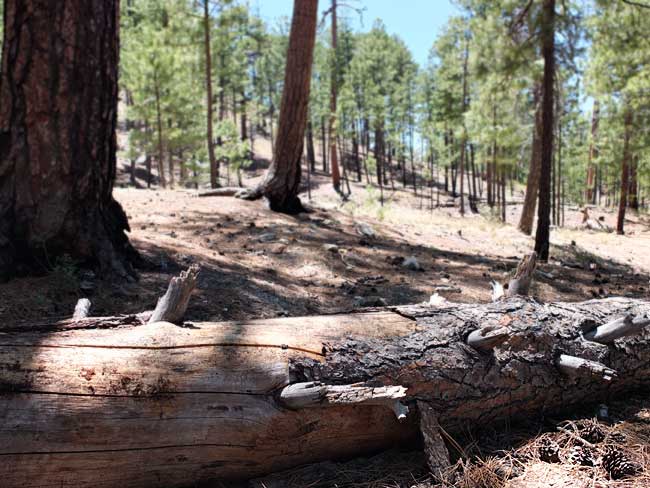 These are Ponderosa pines. When you see this tree species you know you are getting closer to the top. Here we’ve made the transition from a desert to a forest ecosystem.
These are Ponderosa pines. When you see this tree species you know you are getting closer to the top. Here we’ve made the transition from a desert to a forest ecosystem.
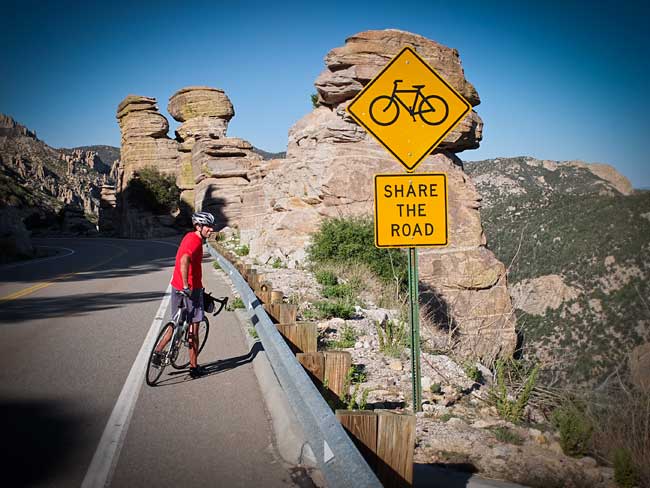 I force a stop on the descent to make this image. The descent is about 60-minutes of pure downhill riding in which the air progressively grows hotter and hotter until, dare I say, it feels as though you are riding through an actual oven.
I force a stop on the descent to make this image. The descent is about 60-minutes of pure downhill riding in which the air progressively grows hotter and hotter until, dare I say, it feels as though you are riding through an actual oven.
Random Images……Blooming Cacti in the Sonoran Desert
I thought summer was coming early to Tucson. Just last week, some of the Ocotillos (Fouquieria splendens) were beginning to bloom. Then came a sudden cold snap and today there’s snow on the mountaintops!
But here’s a taste of things to come in the Sonoran Desert as winter begins to leave us (the images below are from my 2011 photo archives):
Nathan
Random Images……Patio container plants, New Year’s image II
An image made on the patio of my Dad’s place on New Year’s Day.
The green and magenta color combination is always striking. These two colors are on opposite sides of the color wheel, making them complimentary.
As a side note, when two complimentary colors are combined at the proper intensities they produce white light. So, Green (G) + Magenta (M) = White (W). In addition, if you combine the three primary colors (Red, Green, Blue) white light is also produced (R+G+B=W). The great physicist James Clerk Maxwell figured this out (along with his theories of electromagnetism) in the late 1800s, but now I’ve completely digressed.
If you want to play around with these color combinations, here’s a color wheel to experiment with and here’s some good basic color theory.

Random Images……Thanksgiving Day in Sabino Canyon
A beautiful Thanksgiving Day in Sabino Canyon with the sun streaming through a large Arizona Sycamore (Platanus wrightii).
On the Road……More Fall colors on Mt. Lemmon
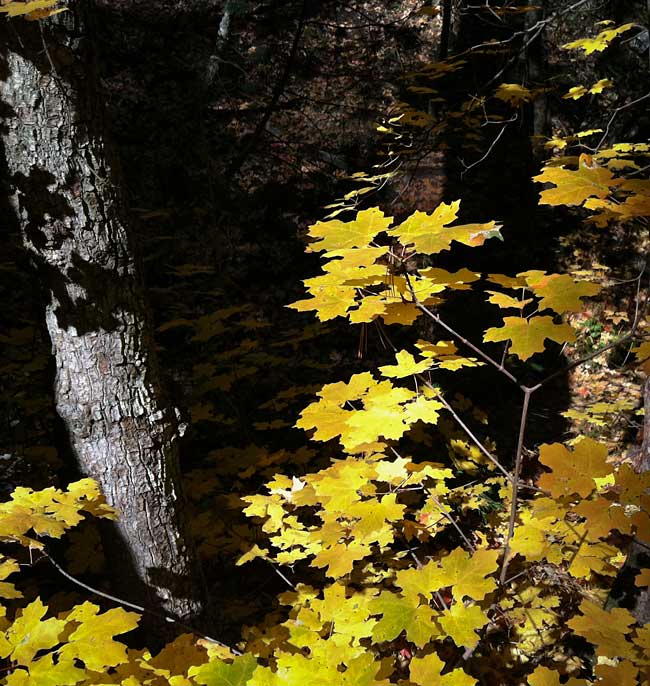 Fall/Winter comes much earlier on Mt. Lemmon than in the valley below.
Fall/Winter comes much earlier on Mt. Lemmon than in the valley below.
Ascending from the valley floor in Tucson to the top of Mt. Lemmon is equivalent to traveling from Mexico to Canada — in terms of the biological diversity and the number of ecological zones one passes through.
These high elevation mountain zones are called Sky Islands:
Weldon Heald coined the term “sky islands” in 1967 to denote mountain ranges that are isolated from each other by intervening valleys of grassland or desert. The valleys of this basin and range country act as barriers to the movement of certain woodland and forest species, somewhat like saltwater seas isolate plants and animals on oceanic islands – hence the common association with the archipelago phenomenon. Other species, such as mountain lions and black bears, depend on movement corridors between mountain islands to maintain genetic diversity and population size. (from The Sky Island Alliance website)
On the Road……Happy Halloween: Fall colors on Mt. Lemmon
In Tucson summer is still hanging around with temperatures in the mid-to-high 80’s, but up at 8,000 feet in the Santa Catalina Mountains Autumn is in full swing.
The Aspen Loop from Marshall Gulch is alive with color this week.
Full disclosure: I didn’t bike all the way up Mt. Lemmon — I took an automobile — but there is precedent for me posting a holiday (e.g. Haloween, Xmas, Solstice) photograph, whether or not there was any riding involved. And now that the weather is cooling down, I plan to revisit the idea of bicycling to the top……really I do!
On the Road……A very verdant Washington, DC
I just returned from a quick trip to Washington, DC. There’s been lots of rain this summer and it shows! The images below were made (with an iPhone camera) around a residential neighborhood near the Tenleytown metro station.
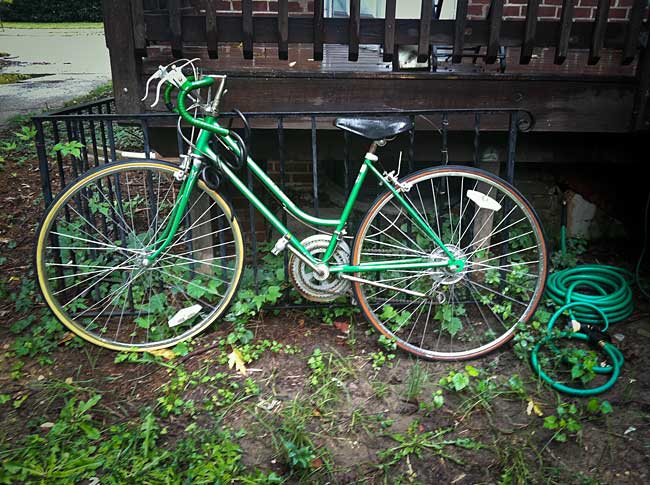 The neighborhood is about 1-2 miles from American University. One of the students living across the way from my friend (who hosted me for the day) no doubt uses this good looking mixte to commute to class.
The neighborhood is about 1-2 miles from American University. One of the students living across the way from my friend (who hosted me for the day) no doubt uses this good looking mixte to commute to class.
It was fun to see my friend Tom (a developer and owner of the Blue Mash Golf course) and eat at one of the best traditional Neapolitan pizza joints on the east coast (2 Amy’s).
Once again, I tried out the Capital Bikeshare program. I had a free hour the morning before I was set to return to AZ so I did some cruising around the National Mall. I have a few images I plan to post soon.
Ride Report……Mt Lemmon, Part II
I’m just now getting around to completing Part II of my ride report covering the scouting trip I made up the Catalina Highway toward Mt. Lemmon a number of weeks ago.
To recap: as I described in Part I, I was only about 6-7 miles and 2500 feet up the mountain before I began to succumb to the high temperatures, lack of water, and gusty winds.
However, as I contemplated ending my ride another bicyclist happened along. She had abandoned her efforts around the 11-12 mile mark anxious about the high wind and the dangers this could poise during the steep, twisting descent. Since she no longer needed all her liquids she offered me half a bottle, which contained some kind of energy, mineral, or electrolyte-infused water.
To my surprise, drinking this helped me recovery most of my energy and instilled a renewed spirit for pushing onward. As I climbed, I actually began to gain strength. I passed a group of three mountain bikers and settled into a good rhythm, climbing for another 5-6 miles which brought me to about 6,000 feet above sea level.
I pulled into the Bear Canyon picnic area around 3:30pm feeling really good.
I attribute much of these good feelings to the Ponderosa Pines (Pinus ponderosa) now populating the landscape. Seeing this majestic species with its distinctive orange-ish bark (a common sight when I bicycled in California) thrilled me to no end. Plus, it signified that I was transitioning through one of the many eco-zones along the route.
However, given that I was out of water again (and it would be 8-9 more uphill miles before I could count on finding more) I decided my exploratory ascent would end right here.
Next up: a quick, yet sublime, 16-mile descent to the valley floor.
On the Road……Central Tucson’s Palo Verdes
I’m back in the desert, but recovering from an awful case of pneumonia valley fever — which is not good at all.
Nonetheless, I saw this lovely Palo Verde (Parkinsonia florida), which is Arizona’s state tree, while riding to pick-up my Honda from the dealership over on 22nd St.
These trees have green branches and trunks to help with photosynthesis, which comes in handy during droughts when the Palo Verde drops its leaves.
On the Road……The Teddy Bear Chollo of Sabino Canyon
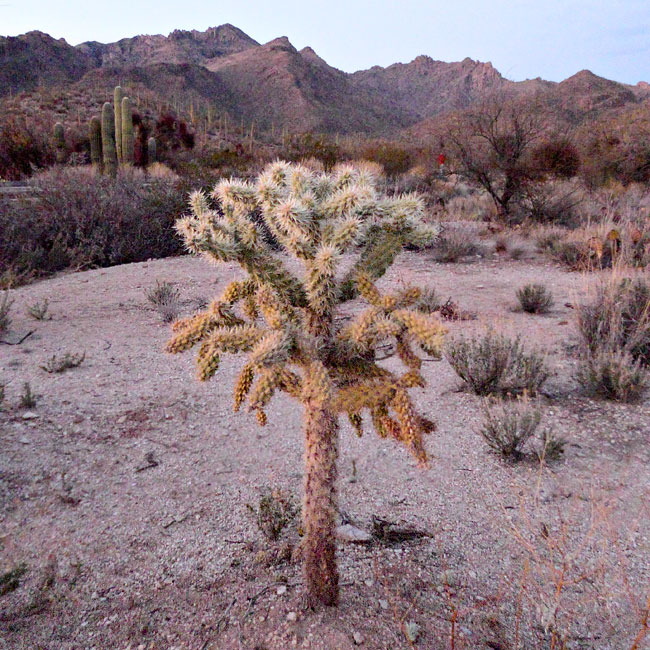
I’m still getting settled here in Tucson, but I’m making an effort to sustain my 11-mile, round trip, bicycle commute to work (at least before the temperatures reach the triple digits).
Tucson’s beautiful Sabino Canyon is open to bicyclists after 5:00pm, which is where this image was made.
The subject seen here is my current favorite cactus: the Opuntia bigelovii or Teddy Bear Cholla.
Nathan
Featured Comment by Laura: “It looks like it was a hard dry winter for that area, so not much of a spring bloom. It’s one of the great joys of the desert to see it in bloom, so if you’re there next year I hope it’s a good one! This site is useful for checking out what’s happening with the fleurs. http://www.desertusa.com/wildflo/wildupdates.html (lots of ads, but the info is good.) I have indeed removed teddy bear cactus spines with pliers. Not from my own calf, I’m happy to say–it weren’t pretty.”
Nathan replies: What a great website. It confirmed the two other blooming plants I’ve been seeing around Tucson. One is the Hedgehog (Echinocereus) and the other is the Ocotillo (Fouquieria splendens), which is my new, new favorite cactus — but it turns out it is not actually a cactus! (P.S. Laura is a talented botanist pursuing her PhD in Ecology and Evolutionary Biology at Brown University. I always appreciate her comments when I attempt to write about the plant kingdom).
On the Road……Trees of Fort Mason II: the Norfolk Pine
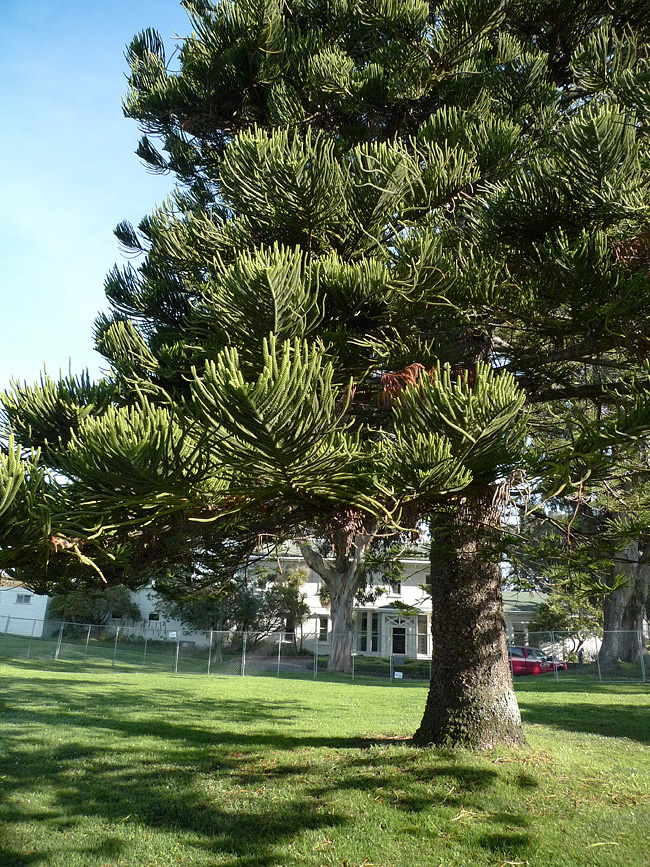 This is a Conifer species that was new to me, the so called Norfolk Island Pine (Araucaria heterophylla) which is endemic to a small eponomously named island in the South Pacific. Norfolk Island looks like quite a vernal landscape with low temperatures rarely below 50 degrees F (and high temperatures rising to only about 80 degrees F), which may explain why this specimen appears to be doing quite well in San Francisco.
This is a Conifer species that was new to me, the so called Norfolk Island Pine (Araucaria heterophylla) which is endemic to a small eponomously named island in the South Pacific. Norfolk Island looks like quite a vernal landscape with low temperatures rarely below 50 degrees F (and high temperatures rising to only about 80 degrees F), which may explain why this specimen appears to be doing quite well in San Francisco.
On the Road……Trees of Fort Mason, San Francisco: Monterey Pine
Biking Culture……Velo-Geo-Photo-blogging tips, Part II
I said, in Part I of this post, that I’d share my general approach for practicing photography while out rambling around by bike. Here’s an example from a recent ride:
Something on the side of the road catches my eye. A prominent fern; some pine needles…
…I lay my bike down…
…and I make some quick images, but I’m not too thrilled with the result (see below).
But now I’m off the bicycle, in a landscape I might never stumble upon otherwise, and I notice one of my favorite trees — a Madrone. I make this close-up image of its bark, which really pleases me.
Ride. Look around. Stop. Shoot. Look around. Ride some more. That’s about it, but here are a few specific suggestions:
1. Don’t aim for perfection: If a subject interests you take numerous shots from different angles and focal lengths — explore the scene with the camera. Working this way, I think less, get into a more creative zone, and avoid the pressure of having to make one perfect image. (Despite this advice, I’m often struck by how often my first composition is the most pleasing.)
2. Be willing to stop and follow your senses: I can’t prove it, but I believe that sense perceptions are much higher when traveling by bicycle then when traveling by foot or by automobile (everything else being equal).
But if you intend to make a photograph (and blog about it) you need to stop and get off the bike. Stopping can be a hassle — you lose your rhythm and momentum, you delay getting to your destination (if you have one), and there are safety issues to consider.
It’s easy just to keep riding — but when you stop and look around all kinds of happy accidents take place.
3. Occasionally, leave the camera at home.
4. Ride with (or without) a purpose. There are three possibilities on any given ride:
- Set-off for a destination and commit to it — unwavering in your goal;
- Set-off for a destination — but be open to changes as you go;
- Set-off with no destination.
I tend to err on the side of spontaneity and the rewards it creates.
On the Road……Olema’s Giant Eucalyptus Trees
The specimen below is probably the largest Eucalyptus I’ve seen. These trees are native to Australia and were originally planted in California — I’m guessing — as wind breaks for ranches and farms. They are quite draught resistant, making them extremely productive trees in this climatic zone. Plus, they smell really good!
On the Road……Shoreline flora along Lake Calhoun, Minneapolis
On the Road……Bon Tempe Lake & Reservoir
A quick bike ride up the mountain to Bon Tempe Lake to recalibrate mind/body.
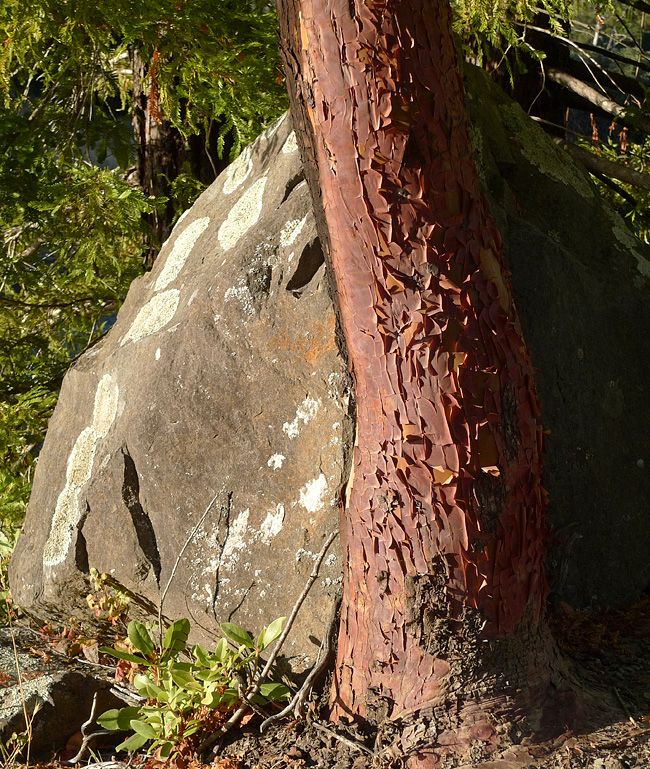 A native Madrone (Arbutus menziesii) — one of my favorite trees with its curious exfoliating bark.
A native Madrone (Arbutus menziesii) — one of my favorite trees with its curious exfoliating bark.
On the Road……Paradise Drive, Corte Madera & Tiburon
Descending into Tiburon
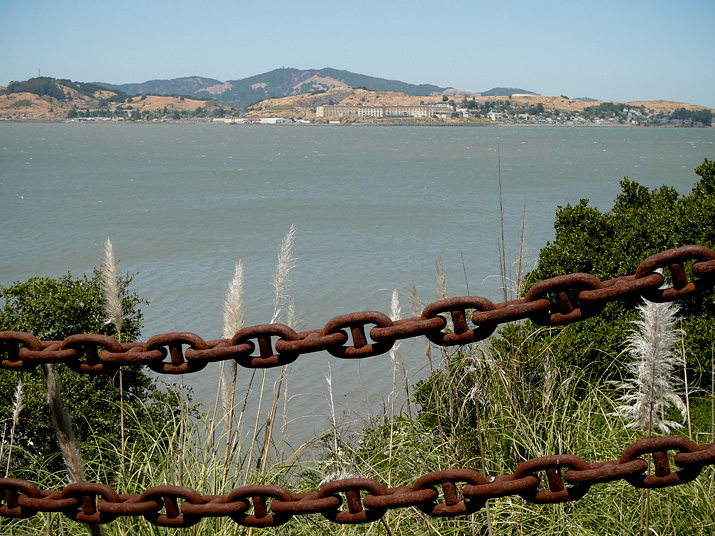 Seen here from Paradise Drive, San Quentin prison (far horizon in the center) sits on some prime real estate .
Seen here from Paradise Drive, San Quentin prison (far horizon in the center) sits on some prime real estate .
 Agave americana. I love these. Supposedly they live 100 years, then die in a magnificent, colorful bloom.
Agave americana. I love these. Supposedly they live 100 years, then die in a magnificent, colorful bloom.
Random Images……Another View of Mt. Tam from the Marsh
Random Images……Corte Madera Tidal Marsh
Since my previous post highlighted this marsh, I thought I’d share a B&W image made with an old Fuji S2 digital camera. The view is from deep in the marsh looking west toward Mt. Tam across tussocks of Pampas Grass (Cortaderia selloana). Over the course of a couple weeks, I made a series of images in this area last spring. This was one of my favorites.
Random Images……Summer Solstice!
To celebrate the Summer Solstice (the longest day of the year and the exact moment — 11:28am PST yesterday — when the earth’s axial tilt is most inclined to the Sun) a gallery of images of Spring flora made on various bicycle rides over the last couple months:
From upper left-to-right and from top-to-bottom:
- Daisies of some kind;
- Sticky Monkey Flower (Mimulus aurantiacus);
- native California Black Oak (Quercus kellogii);
- native Miner’s Lettuce (Claytonia perfoliata);
- a native Pacific Coast Iris;
- native California Poppy (Eschscholzia californica);
- another Pacific Coast Iris,
- a Rose; and finally,
- Scotch Broom (Cytisus scoparius) a troublesome invasive species supposedly wreaking havoc upon on native wildlife ecosystems.
On the Road……Frank Lloyd Wright’s Atrium Garden
I recently discovered a fantastic blog, Tokyo Green Space, which examines ways that biodiversity and urban form coexist in Tokyo. It inspired me to take a closer look at the dialogue between nature and urban design in my own backyard.
On a lunch time bike ride to the Civic Center, I made these pictures of the ground floor garden inside Wright’s famous architectural commission.
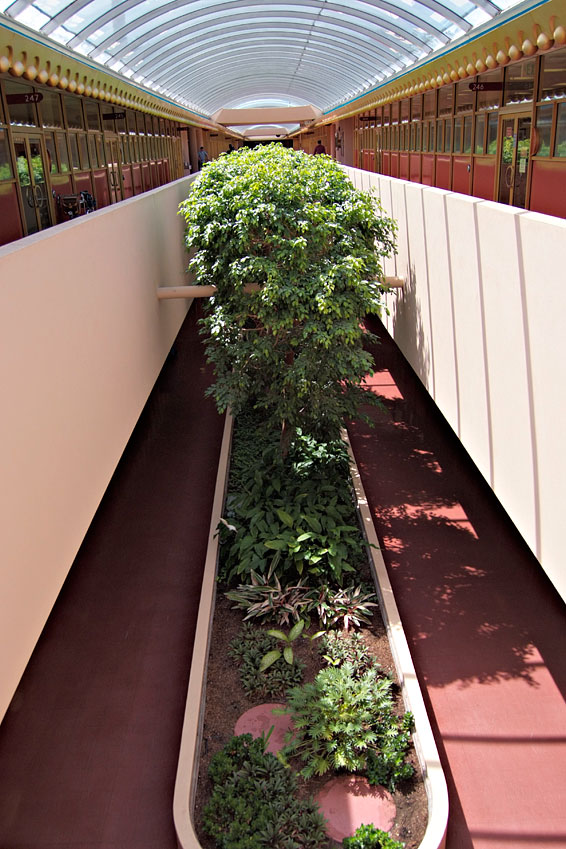 An earlier post included images of the outside of the building.
An earlier post included images of the outside of the building.
On the Road……Port Costa/Carquinez Strait Loop
I don’t know much about these except that they are often called ice plants, which is a bit of a misnomer since they’re quite hardy and thrive in full sunshine.
Most likely these are a pesky invasive species. Nonetheless, they’re often growing en masse along California highways. The flowers’ vivid color is impressive when in full bloom.
On the Road……Port Costa Loop Ride
On the Road……Sorich Ranch Park, below San Rafael Ridge
March showers bring April flowers…just down the street from the dog park!
Not sure the species, don’t think they’re native.
Cape Daisies, originally from the South Africa, according to my botanist friend, Laura.
On the Road……Cataract Mushroom Gallery
Last week, instead of biking I went for a rainy day hike up the Cataract Trail to Laurel Dell. Lots of mushrooms, but not a Chanterelle to be found 🙁
Espresso Review……Woodacre Country Market & Deli
Most people riding out to West Marin keep on Sir Francis Drake Blvd. staying focused on prizes like Pt. Reyes Station or Chileno Valley Rd.
However, if you’re not in a hurry the short detour (see geotag link under image) down San Geronimo Valley Drive offers less cars and more shade on those hot summer days.
Plus, this takes you past the Woodacre market (that serves up a typical thin espresso in an oversized cup. But hey, you can’t be too picky about your coffee when you’re in the hinterlands!).
On the Road……Civic Center Farmer’s Market
On the Road……Bolinas Lagoon, Eucalyptus Trees
A distinctive non-native species found all over rural Marin county. They grow like crazy, shed lots of leaves and bark, and have a really strong aroma. For me, they’re as familiar a part of the landscape as native Manzanita or Douglas fir.
On the Road……Santa Cruz
This is where your brussel sprouts come from……and the last bit of farmland before entering Santa Cruz (just past Wilder Ranch State Park).
One of my knees was really killing me at this point (and by killing me, I mean it felt like I was being stabbed in the knee with two screw drivers). I later discovered I had stupidly pedaled 100 miles on a saddle that was set too high. Lesson learned.
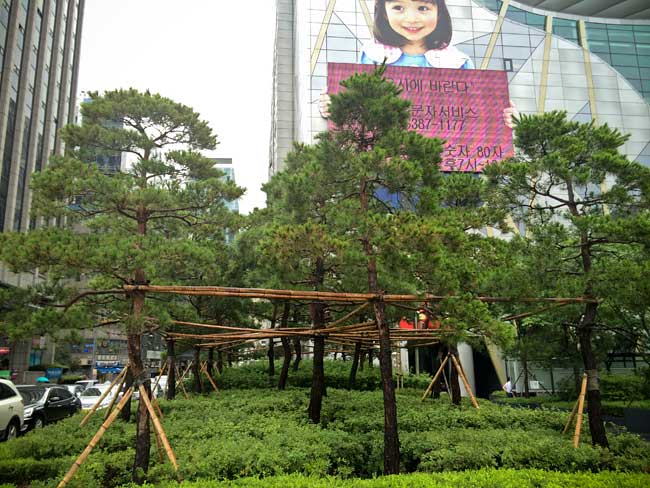
 Show on map
Show on map